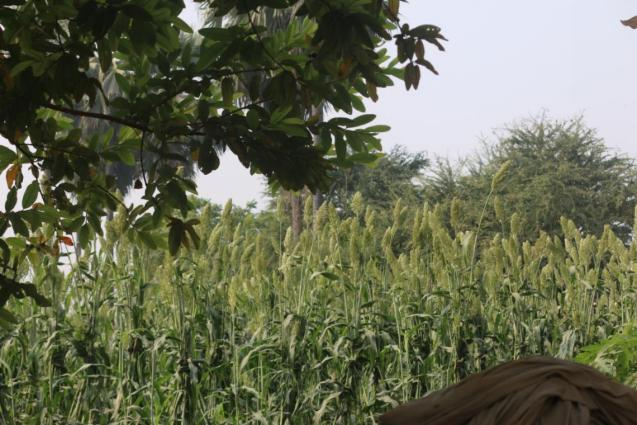Markets in a country as diverse as India are often hailed as epitomes of cultural and social variations with their rich ancestral histories, combined with regional and modern identities. They are also a great place to observe and evaluate the richness of cultural and symbolic dimensions through the lens of commerce and ritualistic human behaviour. Apart from the seemingly unwieldy operation that is the Indian Market, the people milling about within the chaos of a too small boundary provides one with a unique perspective that can only come through spending an extended period of time observing and engaging with the market.
The objective of this report was to study such an Indian Market, moving beyond its economic functions and analyzing our ethnographic learning to understand the social relationships, spatial dynamics and various aesthetics that define its operation. The primary object of focus at the market is the seasonal delicacy of Ponk. Also called Sorghum and Hurda, Ponk is green immature Jowar. The Jowar we usually see is harvested a little later but Ponk is harvested when the seeds are still young in the months of November- December. In Gujarat, the Ponk season is more than a culinary experience, it is a social affair.
The Market
The market studied is the appropriately named Ponk Nagari market located in the Adajan gam, a north-western neighbourhood of Surat, across the river Tapi. Ensconced between a Shani temple, a tennis court, the river and a landfill, this area perfectly captures the semi-urban muddy aesthetic that one has come to associate with ever-developing Indian cities. The entry-point is a large billboard like gate with a driveway under the Sardar bridge and is fenced on the front side with barbed metal wires. There is a lot of parking space under the bridge where people park their bigger vehicles and two-wheelers are parked inside the market.
Upon entering the market, you are welcomed with the enticing smell of Ponk vadas getting freshly prepared on the left hand side, with the sound of Bollywood rhythms almost overpowering the entire area. The sensory aesthetics of the place was a combination of the sweet smell of the vadas, the blaring symphonies of the raunchy musical beats and the wood ash getting blown with the wind. Our first visit to the market was filled with a sense of dispirit and fascination with the contrasting themes of the landscape.
On the left hand side stand the Ponk dishes shops that sell Ponk vadas, sandwiches, patties and beverages which garner much of the customer attention. These shops are generally empty during the day, but see a boom of activity after 6 PM as families come out post office hours. The fresh Ponk shops have lesser customers overall but they are consistent in sales throughout the day. People start coming to shop live, green Ponk as early as 9 AM, and mostly buy it in varying quantities under one kilogram. When you first approach a shop, the person at the counter (galla) offers you a handful of the Ponk seeds to taste test (We had almost half a kilo of Ponk seeds by the end of our first day on the field). There is little to no attempts at bargaining for the price as the neither the owner nor the potential customer has the time to squabble over trivial matter. They may just move onto the next shop. The owner also doesn’t try to retain a purchase. Live, green Ponk is sold at a price of six hundred rupees per kilograms making it a premium commodity.

The market is a quiet affair till late afternoon, after which it starts to fill up with people of all demographics. The vada stores get easily filled up to brim, and people wait in lines to place their order and get seated. The Ponk shops see a similar traction but the lines are bigger here, as it takes time for buyers to first taste, ask prices, decide the quantity of the produce they want to buy and for the seller to weigh the seeds, put them in respective envelopes, collect the cash, and place the entry into their books. Some customers, however, have not come just for the purchase. They venture inside the shop tent, or walk around it to find the workers hard at work in the process of extracting the Ponk seeds. They try to ask questions about the process, interact with the workers and video-graph the happenings around them. The workers are instructed not to talk as well as do not seem to care to answer mundane questions from outsiders. Just as those customers, my fieldwork partner Diksha and I were fascinated by the music infused Ponk extraction process we had seen before on the internet and decided to visit and look into the intricacies of the market. The following report looks, in detail, at the Ponk shop that was studied and the labourers who work at there. The entire extraction process is also discussed along with the spatial mapping. My observations and notes also make their way into the analysis of my experience.